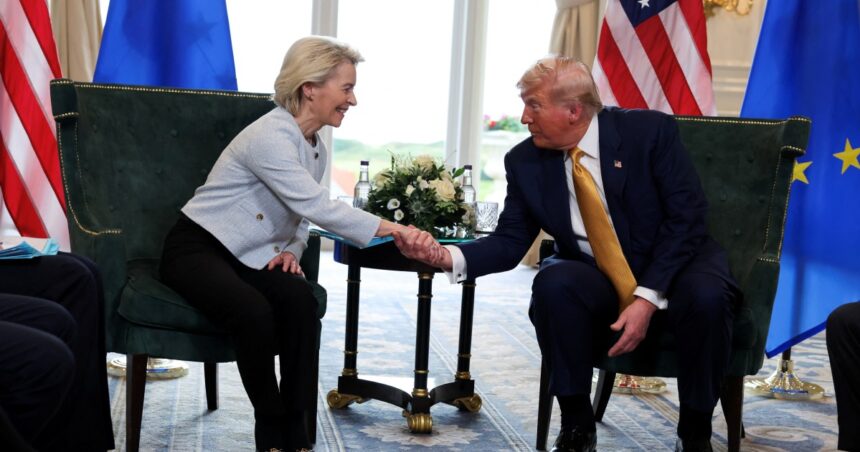In a major development in transatlantic trade relations, the European Union and the United States have reached a landmark trade agreement that introduces a 15% tariff on European exports to America. While the deal aims to streamline commerce and reduce uncertainty, the inclusion of fixed tariffs has sparked debate among economists, exporters, and political leaders across Europe.
Key Highlights of the Deal
1. Fixed Tariff Rate Introduced
Under the new deal, a uniform 15% tariff will apply to a wide range of European goods entering the U.S., including automotive parts, agricultural products, and consumer electronics. The move is intended to create a more predictable trade framework but could impact price competitiveness for EU manufacturers.
2. U.S. Seeks to Protect Domestic Industry
American negotiators emphasized the need to protect U.S. industries from what they claim are “unfair subsidies” within the EU. By implementing tariffs, the U.S. aims to level the playing field for domestic producers while maintaining a stable relationship with European partners.
3. EU Reacts with Concern
EU officials have expressed concern over the tariff structure, warning it may strain key sectors and lead to higher consumer prices. Some member states are already considering proposing countermeasures or targeted subsidies to soften the blow on their export-heavy economies.
Background of the Agreement
Trade relations between the EU and U.S. have been under strain in recent years, marked by disputes over steel, digital taxes, and environmental standards. This agreement, while controversial, marks a step forward in formalizing economic relations between two of the world’s largest economies, replacing older, fragmented arrangements with a standardized framework.
Economic Impact
While the long-term effects remain to be seen, early analysis suggests that European exporters may see reduced margins and potentially lower demand from U.S. buyers. On the flip side, U.S. industries could gain breathing room to grow without facing overwhelming foreign competition.
What’s Next?
The trade deal is expected to be phased in over the next six months, giving companies on both sides of the Atlantic time to adjust. However, with potential WTO scrutiny and backlash from certain EU sectors, it’s clear the deal won’t be implemented without resistance.
Conclusion
The EU-U.S. trade agreement marks a significant shift in global trade policy. While it offers stability and predictability for some, the 15% tariffs may prove to be a challenge for European exporters. As businesses recalibrate and governments weigh responses, all eyes will remain on the deal’s real-world economic ripple effects.








